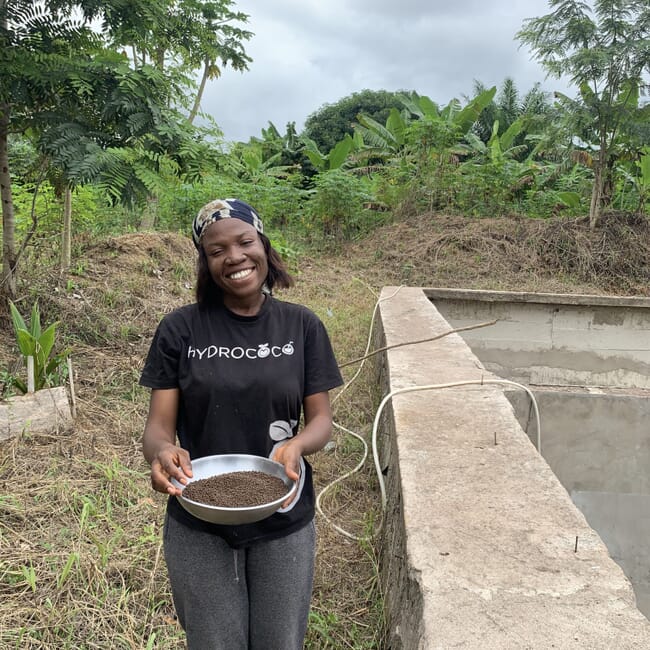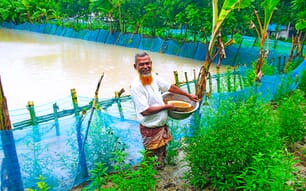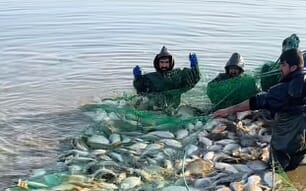
Before Nutifafa set-up her catfish farm, Saviefe Agorkpo was an area that lacked aquatic resources – a fact that had prevented her father from realising his dream of building a fish farm, which would have provided the local community with good quality tilapia and catfish.
What size is your farm and what species do you produce?
I have seven medium-sized concrete ponds with the capacity to hold over 5,000 catfish each, and I am in the process of building five large earthen ponds and a multi-purpose block for storing and processing. Part of the building will be used to transfer skills to other fish farmers in the region.
Why did you decide to embark on a career in aquaculture?
My dad has for years expressed interest in starting a fish farm, and I got interested. Unlike most towns in the Volta Region, our district has no water bodies that could provide us with fish, so he wished he could solve that problem by building a fish farm, so I promised him I would do that.
Fortunately [as a builder] he is involved in the kind of business that enabled me to build the required structures. We also have ideal conditions for pond farming and for producing fish feed ingredients. We have started transforming our age-old traditional fish processing, with the introduction of improved processing methods. These will transform our economy in the next few years.
What’s your ultimate ambition in the sector?
I would like to provide small fish farmers in the Volta Region with the leadership that will enable us to become a major player in national production. The big farms on the Volta Lake have gained a lot of attention for being the provider of the bulk of aquaculture production for many years. This is good, but there are sustainability challenges. Again, small-scale aquaculture has not received much attention, and I am seeking to help change that situation, mainly through training farm personnel, and in organising a continuous market for farm produce. I expect my farm to hit my 200-tonne per year target within three years.

Nutifafa's farm consists of seven medium-sized concrete ponds and she's in the process of building five large earthen ponds and a multi-purpose block for storing and processing – she expects to be producing 200 tonnes of catfish per year within three years © Shutterstock
What’s your biggest worry at work?
I have three main challenges, which reflect those of farmers in my region: like most farmers I spend over 70 percent of my budgets on feed, which is quite a disincentive to profitable production. There is also the problem of markets for our produce: middlemen have dictated the price of fish farm produce for many years, and we are actively working to change that situation. And the last one is the dearth of technical skills. I have been using external technicians, and am now starting a training programme for my staff and other farm personnel.
What’s your greatest achievement to date?
I am in the process of mobilising farmers in the Volta Region to join a Ghana Aquaculture Association scheme to buy catfish and tilapia for delivery to bulk buyers and catering establishments. This will solve a major headache of farmers – the unfair prices dictated by middlemen and market queens. This has gone well so far, and my colleagues are very appreciative. I am satisfied that I have made a contribution towards helping our fish farmers to take a major step forward. We are also working with the Ghana Aquaculture Association to introduce commercial fish feed based on alternative ingredients, including duckweed, single celĺ protein and black soldier fly larvae.
What’s your favourite seafood dish?
In the past I would have said banku [maize meal] and catfish served with hot sauce. But these days, all manner of exciting tilapia, catfish and shrimp dishes have entered our market, and I have been sampling and enjoying them, especially the pizzas, the sausages and the pies. If I’m pressed, I will choose tilapia pizza. Unbeatable!








